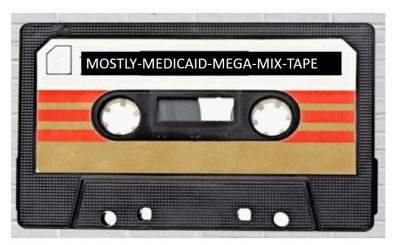The article below has been highlighted and summarized by our research team. It is provided here for member convenience as part of our Curator service.
Curator summary
Medicaid members are using benefit and incentive cards for overall healthy activities during the pandemic.
ATLANTA, Nov. 23, 2020 /PRNewswire/ — InComm Payments, a leading global payments technology company, today released the results of its Medicaid subscribers research, which found that many Medicaid members are prioritizing healthy habits during the COVID-19 pandemic. The study was based on responses from 1,700 U.S. Medicaid subscribers during the month of October.
Medicaid enrollment is up this year, according to recent analysis completed by the Kaiser Family Foundation, a trend expected to continue as enrollment reflects changes to the economy. This trend was captured in the survey as 15% of respondents were new users who signed up for Medicaid within the past year. All respondents were asked about their health-related behaviors and attitudes regarding restricted-access network benefits and rewards/incentives cards.
“It’s no surprise that healthy habits and routine services are a top priority for many at this time,” said Brian Parlotto, Executive Vice President at InComm Payments. “It’s encouraging for health plans that members are paying attention to their long-term health and expressing an interest in plan incentives that may help maintain their healthy behaviors.”
Majority of Medicaid subscribers agreed that healthy habits are more important now than ever
- Nearly all respondents (96%) said healthy habits are on their daily priority list.
- However, 45% of respondents said healthy habits are difficult to maintain during the pandemic. The main factors impacting maintaining healthy habits were:
- Stress (49%)
- Expenses (24%)
- Reduced access to gyms or classes (10%)
- Over 40% of respondents said they were engaging in fewer in-person medical services.
- But 59% of subscribers are using telehealth appointments more now than in the past.
Medicaid subscribers report willingness to engage in preventive care if incentivized
We asked respondents what they’d be willing to do to earn rewards dollars through an incentives/rewards card program. The top five activities were:
- 68% said they’d complete annual wellness exams.
- 58% said they’d complete a yearly dental visit.
- 53% said they’d take annual vaccines, including the flu shot.
- 50% said they’d complete screenings and risk assessments, such as cholesterol tests, mammograms or prostate exams, etc.
- 42% said they’d participate in mental health coaching.
Subscribers express interest in restricted-spend/rewards card programs
Respondents who weren’t enrolled in restricted spend select product and incentives/rewards programs were asked about their interest in these plan benefits
- 82% of Medicaid subscribers who aren’t currently able to use a rewards/incentive card said they would have some level of interest in such a program.
- 83% agreed they’d be willing to complete some form of administrative activity (e.g., online logs, after-program tests, etc.) in order to join a rewards program.
Medicaid reward cards are overwhelmingly well-received by cardholders
- 90% believe this benefit helps them achieve their health and wellness goals.
- 90% rated their overall experience with the card as ‘4’ or ‘5’ out of five stars.
- 67% use their card at least monthly.
- 88% report using the card in-store is easy.
“We’re happy to see that health plans are able to make such a positive impact in Medicaid members’ overall health and satisfaction,” said Parlotto. “We’re excited keep growing our offerings at InComm Healthcare while assisting health plans in supporting the long-term health of their members; for example, our Healthy Foods Card can help plans distribute funds for healthy, nutritious foods, assisting members who may be struggling with food insecurity due to stress or cost.”
InComm Healthcare helps health plans to offer their members supplemental benefit and incentive dollars. InComm Healthcare currently serves more than 500 health and wellness programs for over 300 health plan partners, reaching over six million OTC Network cardholders. The cards in its product suite are accepted at more than 60,000 retail locations, including national retailers and independent pharmacies.
About InComm Payments
InComm Payments is a global leader in innovative payments technology. Leveraging dynamic technology and proven expertise, InComm Payments delivers enhanced end-to-end payment platforms and emerging financial technology solutions that help businesses grow across a wide range of industries including retail, healthcare, tolling & transit, incentives, mobile payments and financial services. By enabling omnichannel connections to an ever-expanding consumer base in an increasingly digital ecosystem, InComm Payments creates seamless and valuable commerce experiences across the globe. With more than 25 years of experience, over 500,000 points of distribution, 386 global patents and a presence in more than 30 countries, InComm Payments leads the payments industry from its headquarters in Atlanta, Ga. Learn more at www.InCommPayments.com.
Media Contacts:
Anthony Popiel
Dalton Agency
404-876-1309
apopiel@daltonagency.com
Nilce Piccinini
Sr. Communications Manager
InComm Payments
404-935-0377
npiccinini@incomm.com
View original content to download multimedia: http://www.prnewswire.com/news-releases/incomm-healthcare-explores-medicaid-subscribers-health-related-habits-cardholder-experiences-301178497.html
SOURCE InComm Payments

